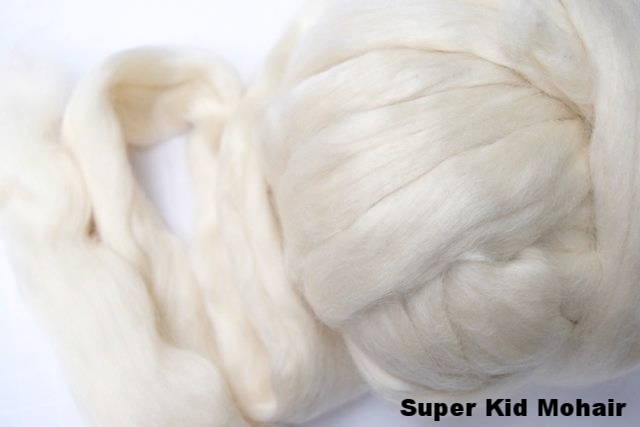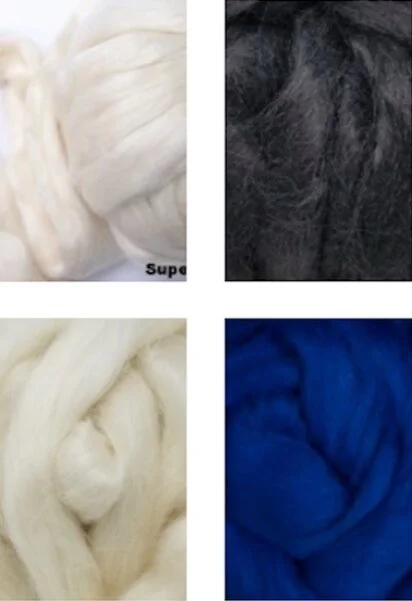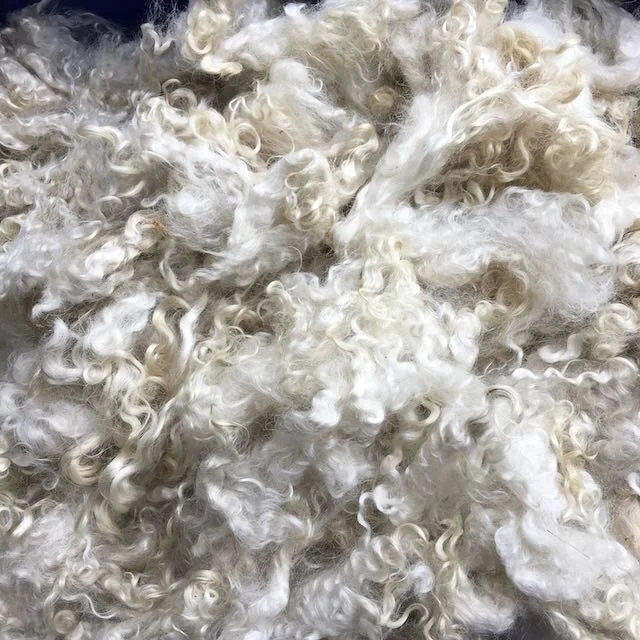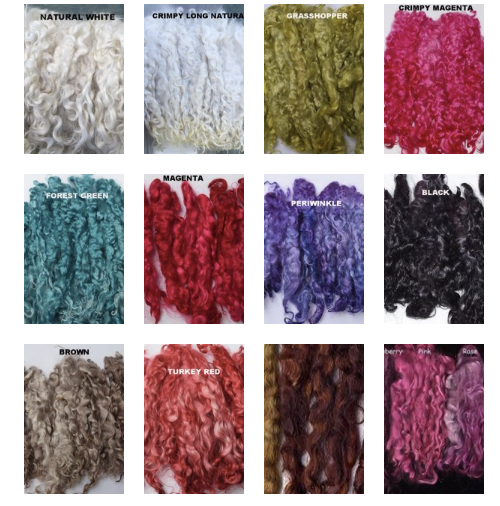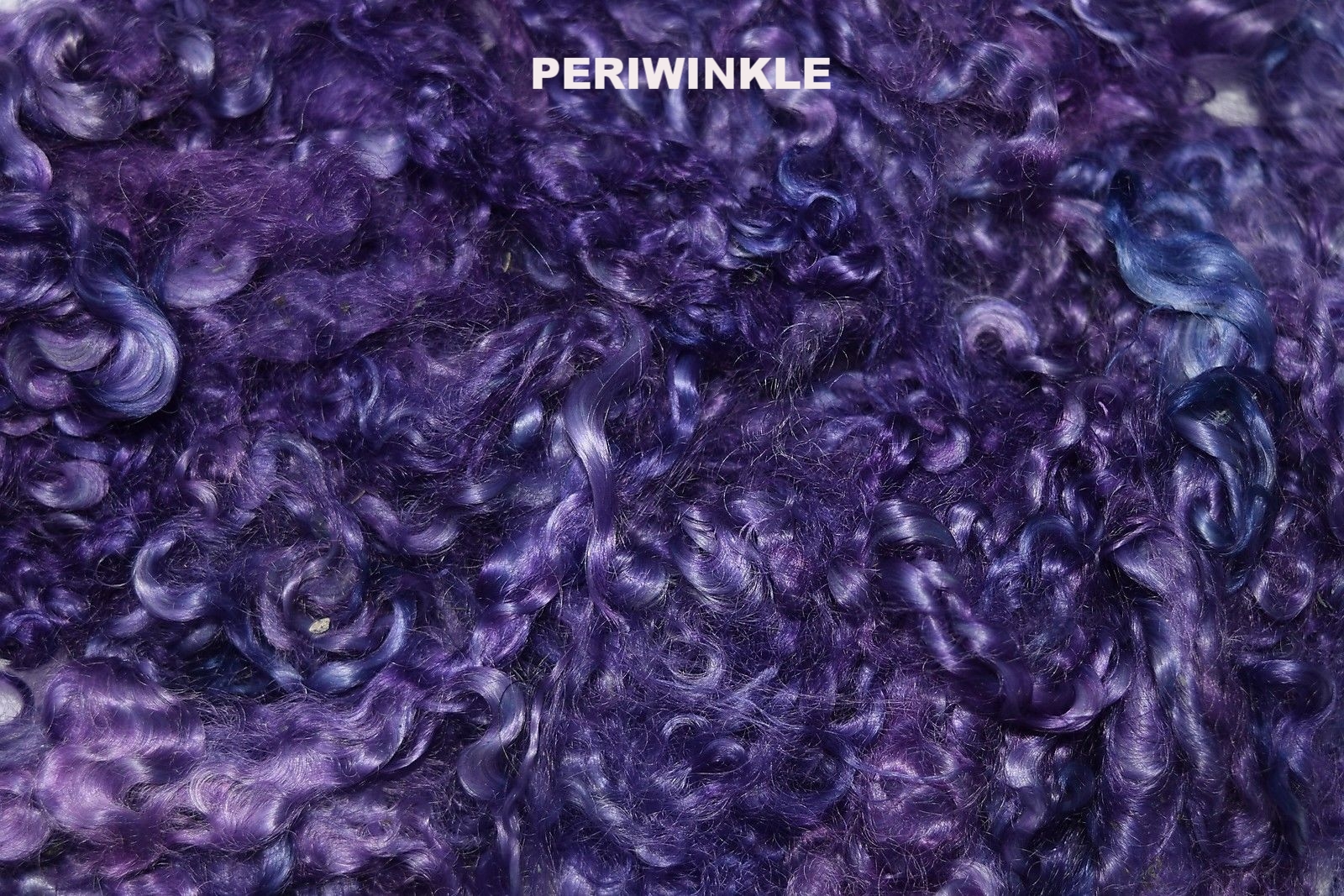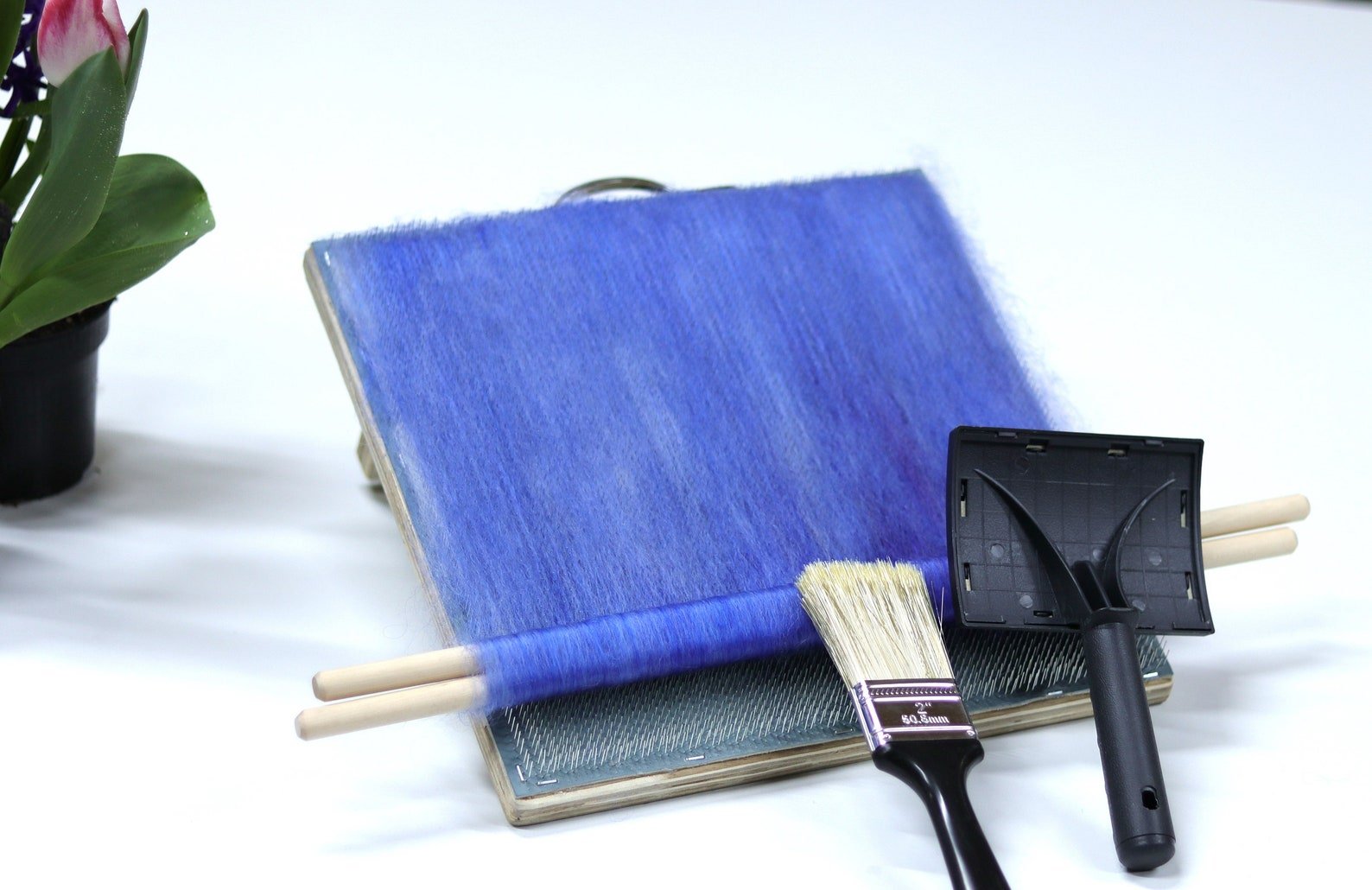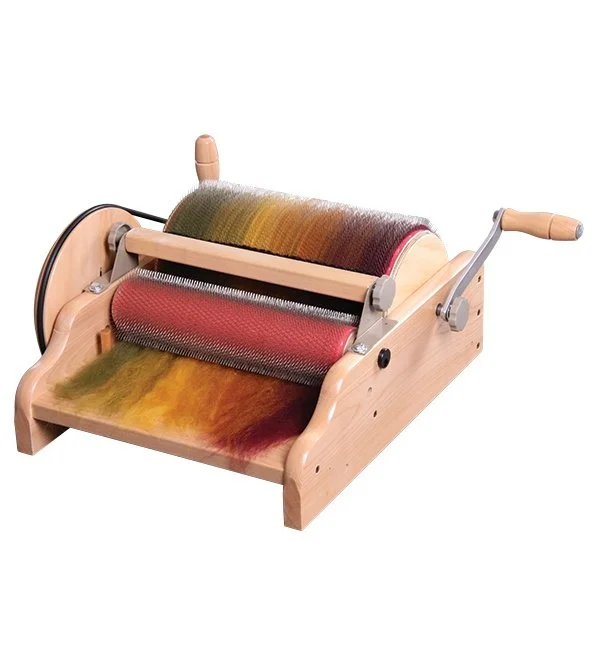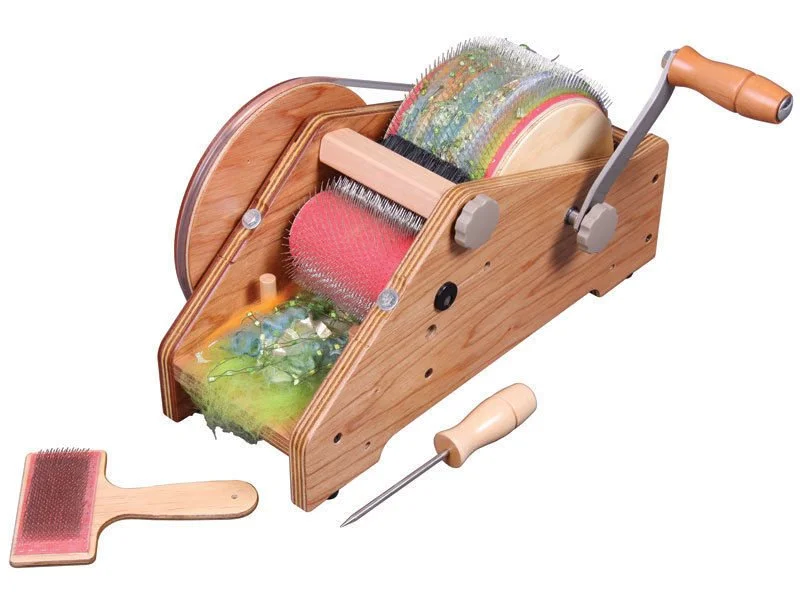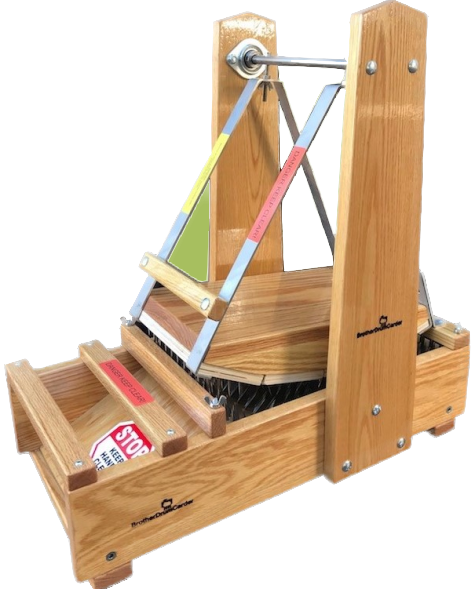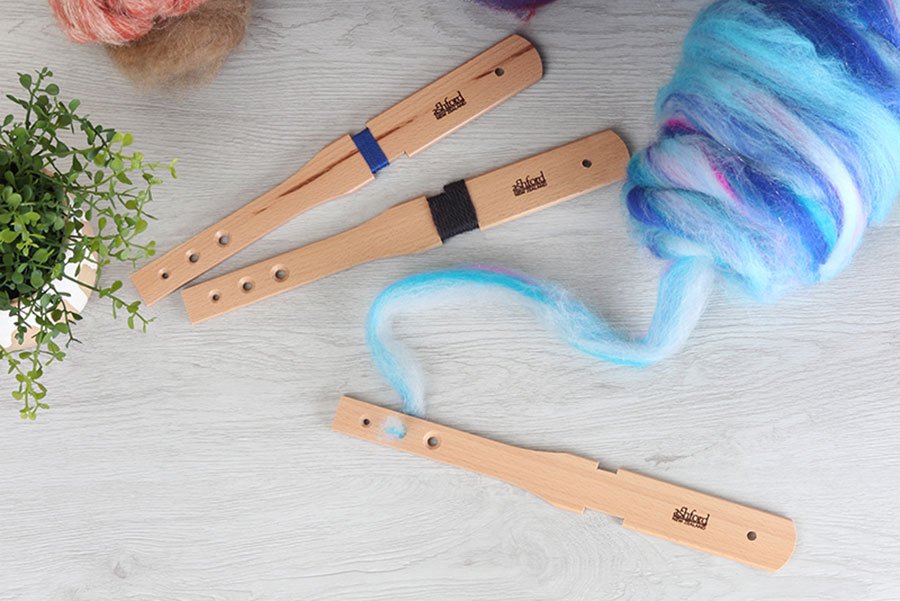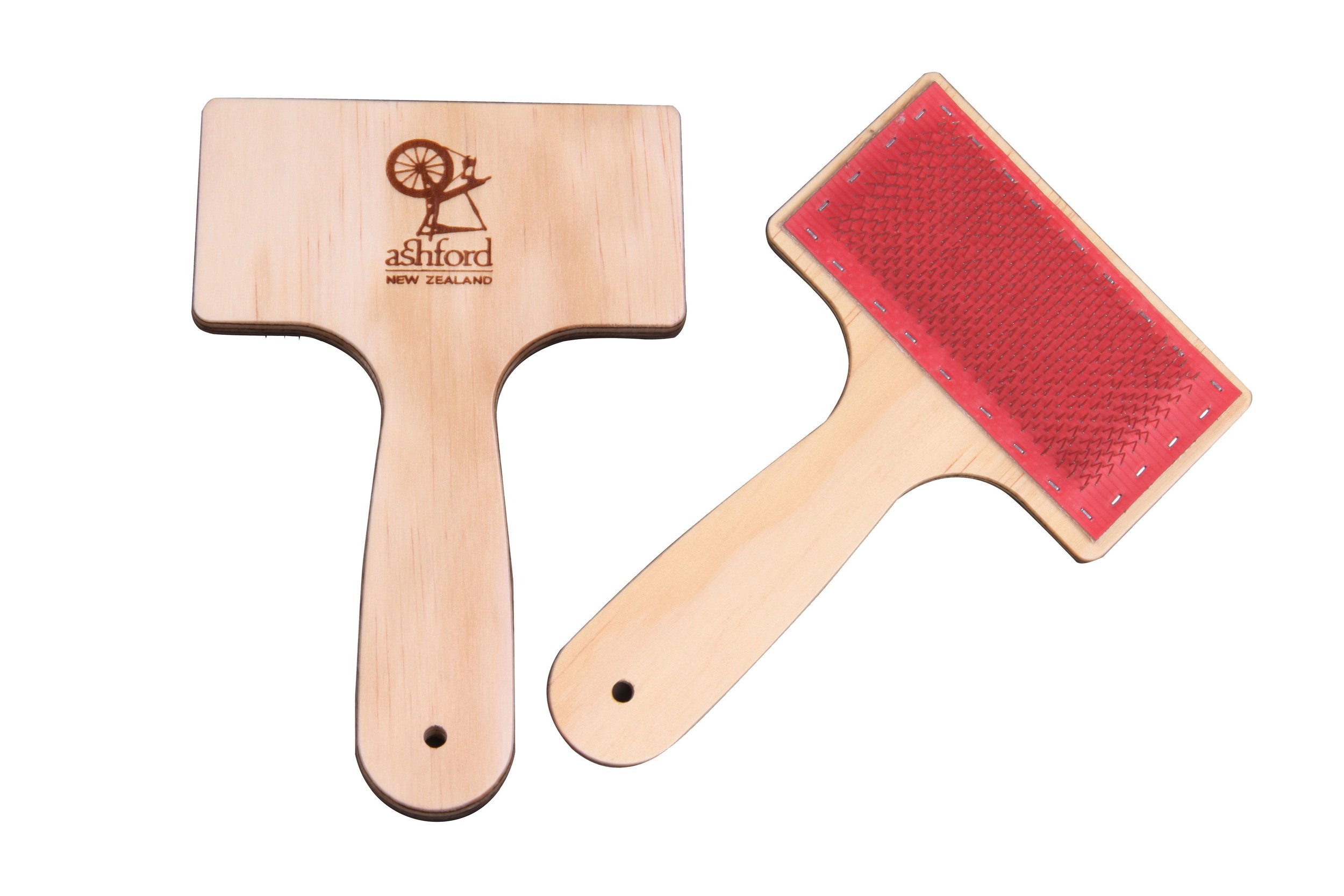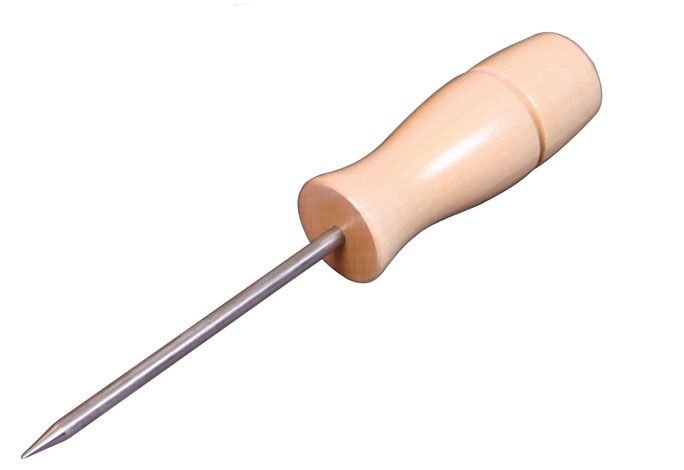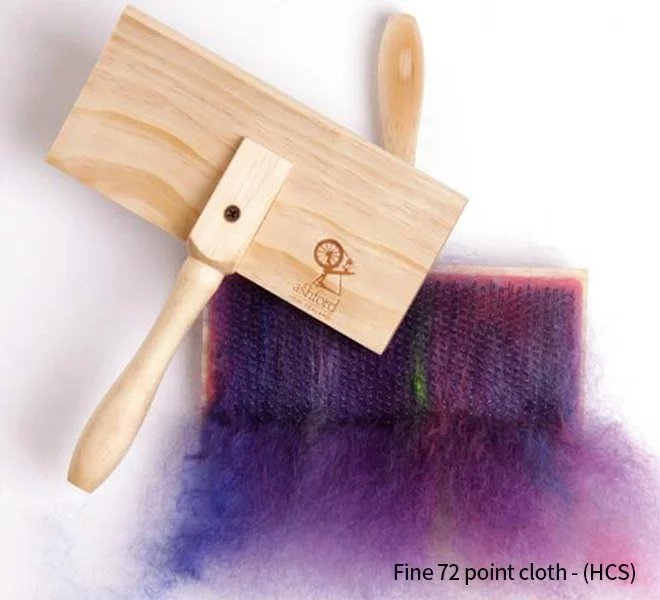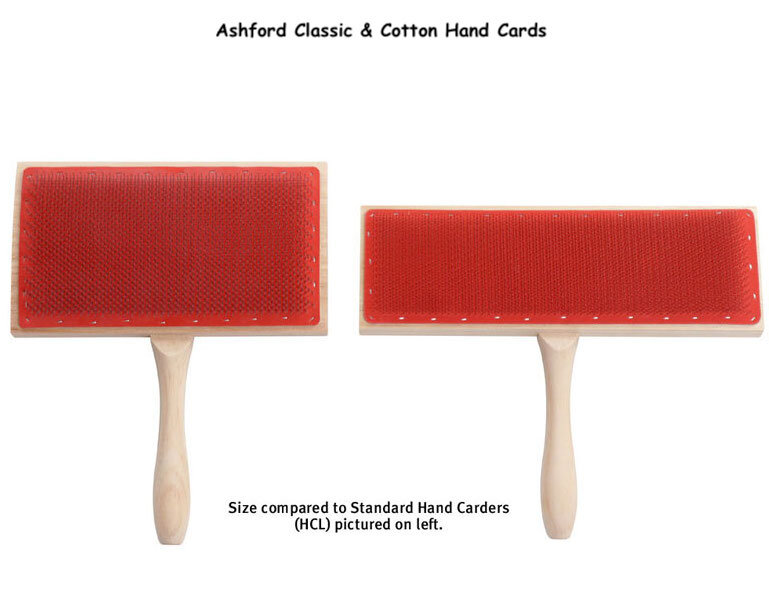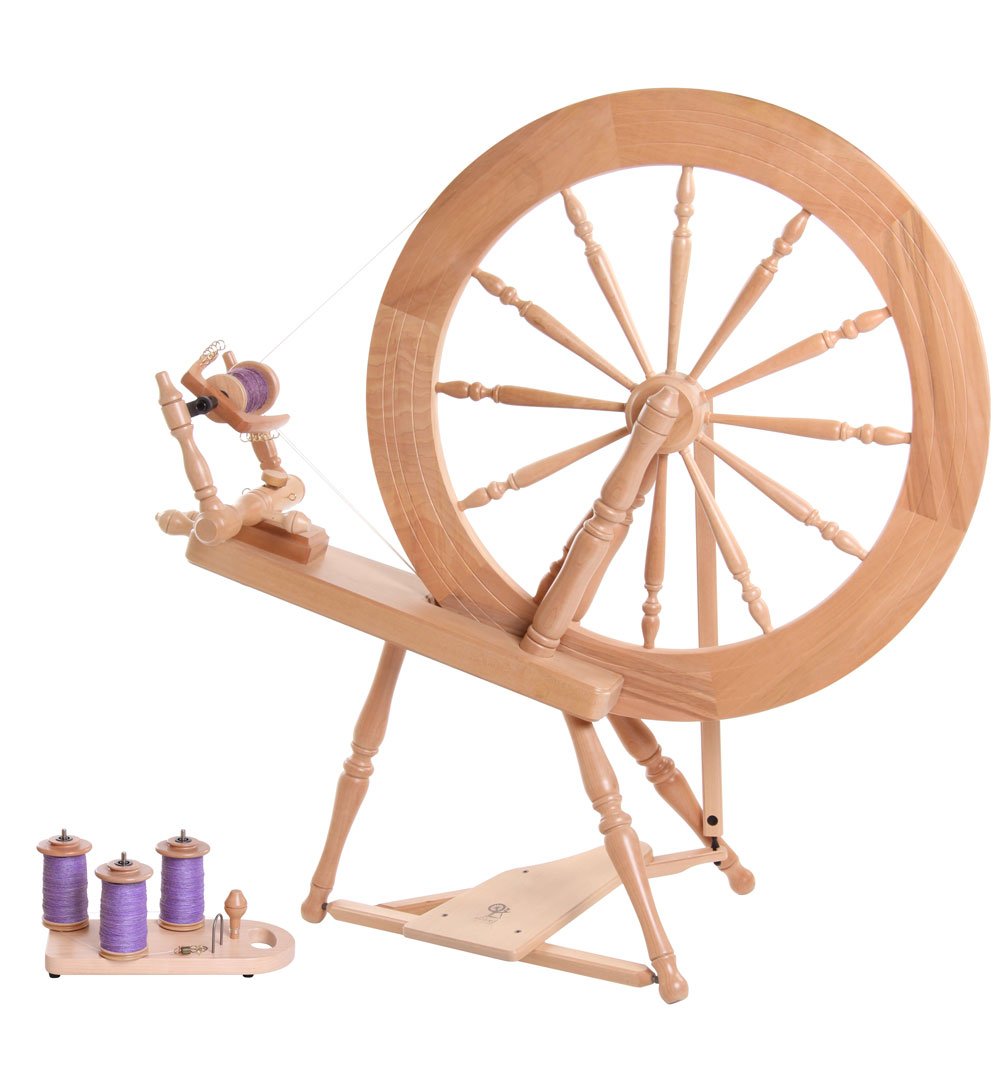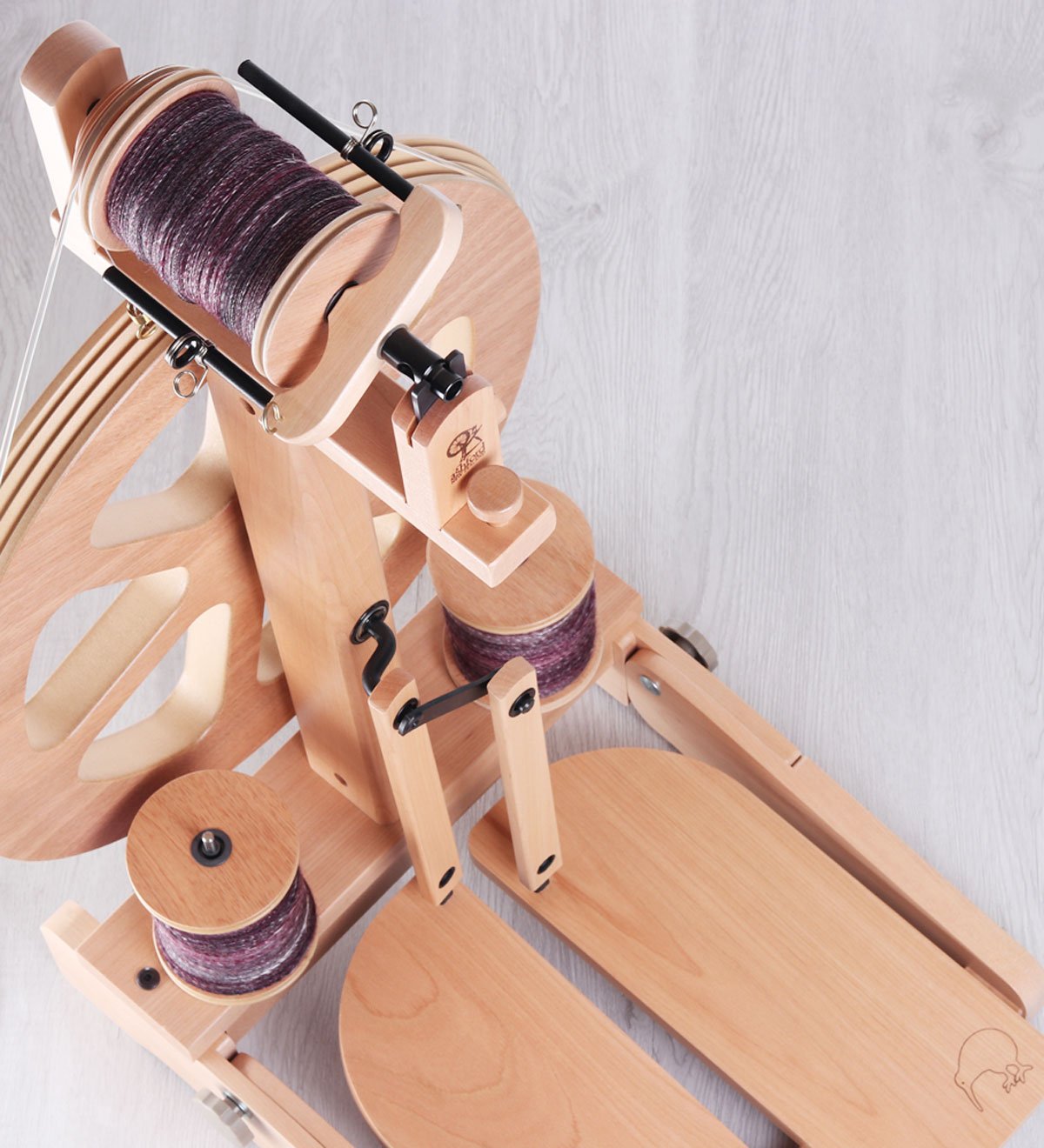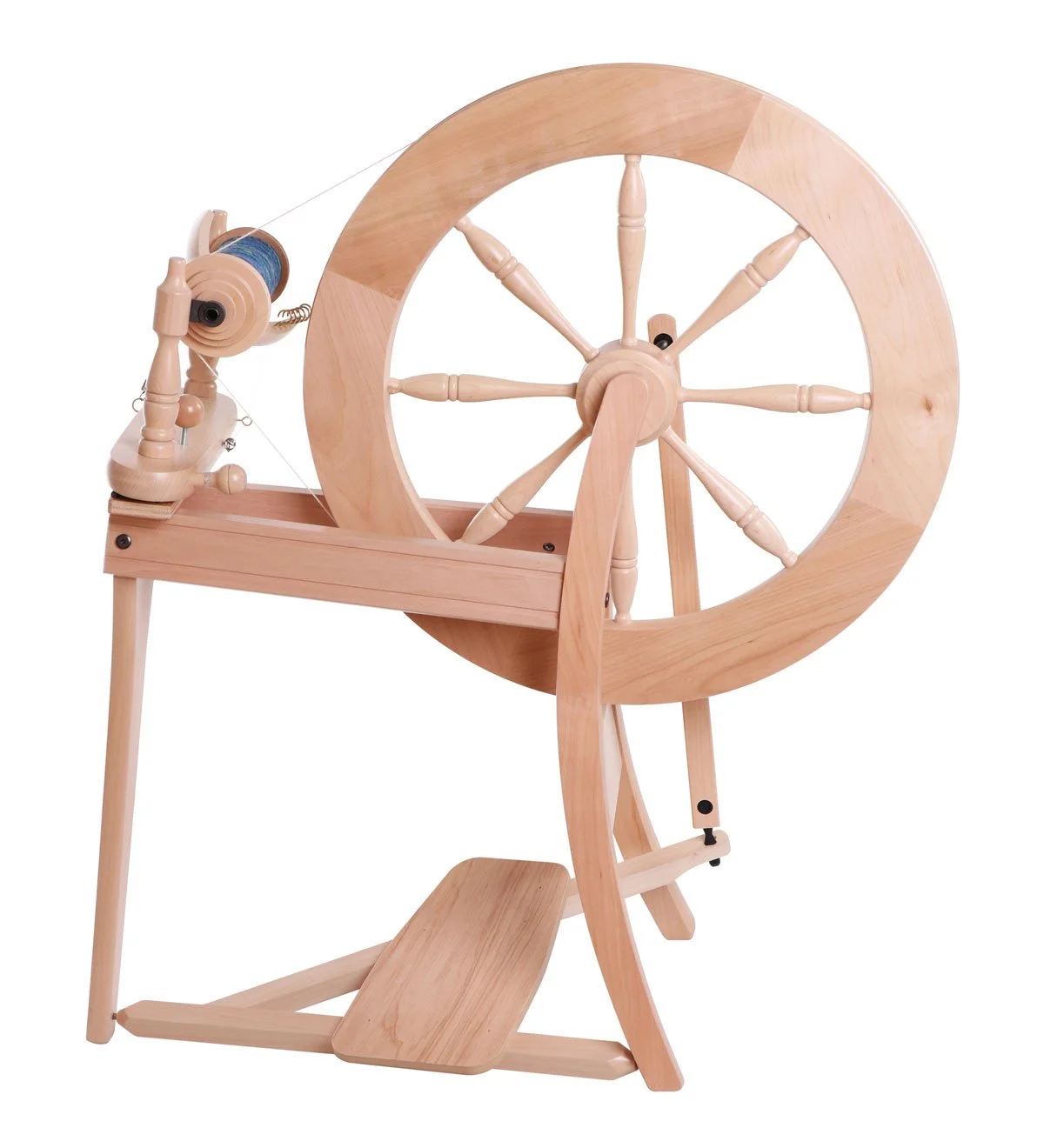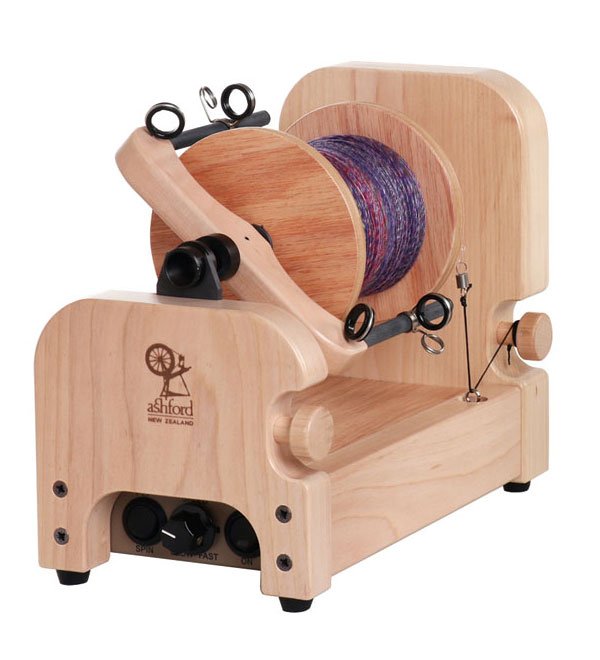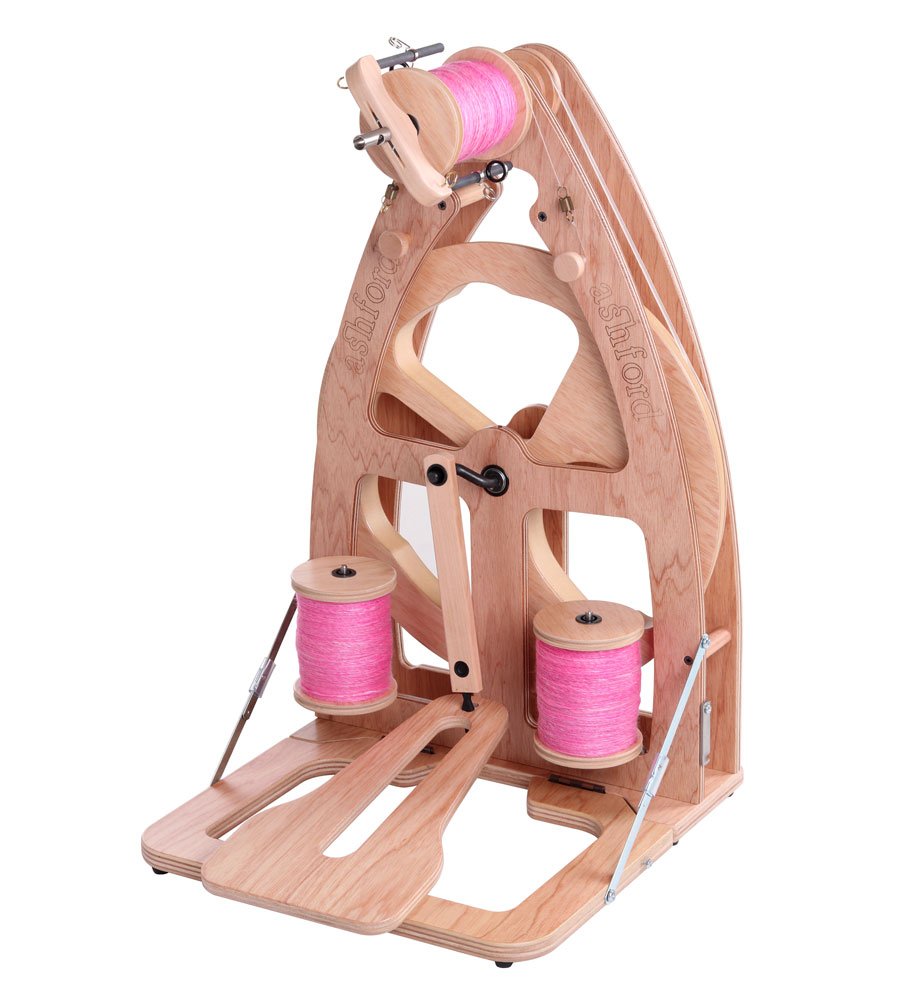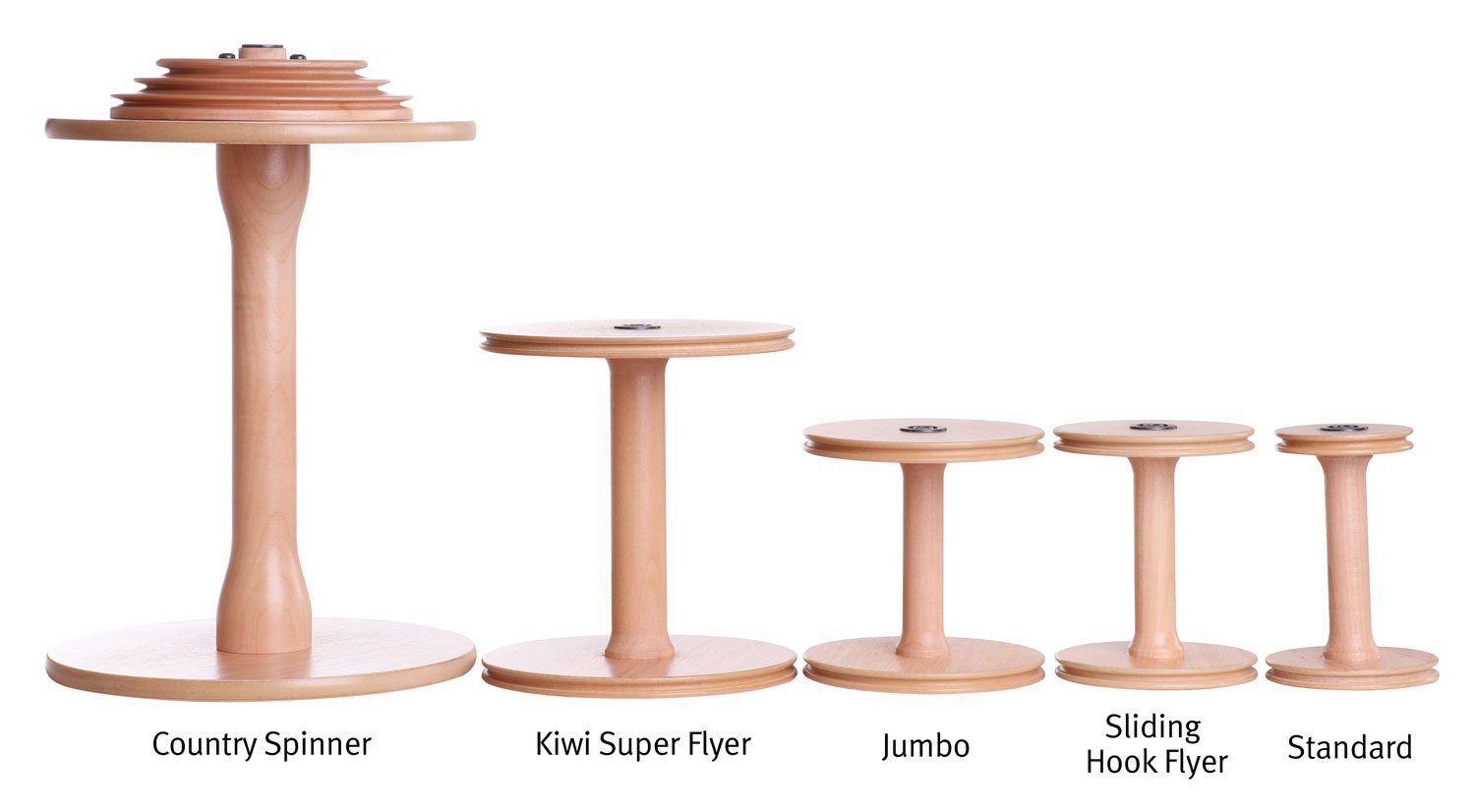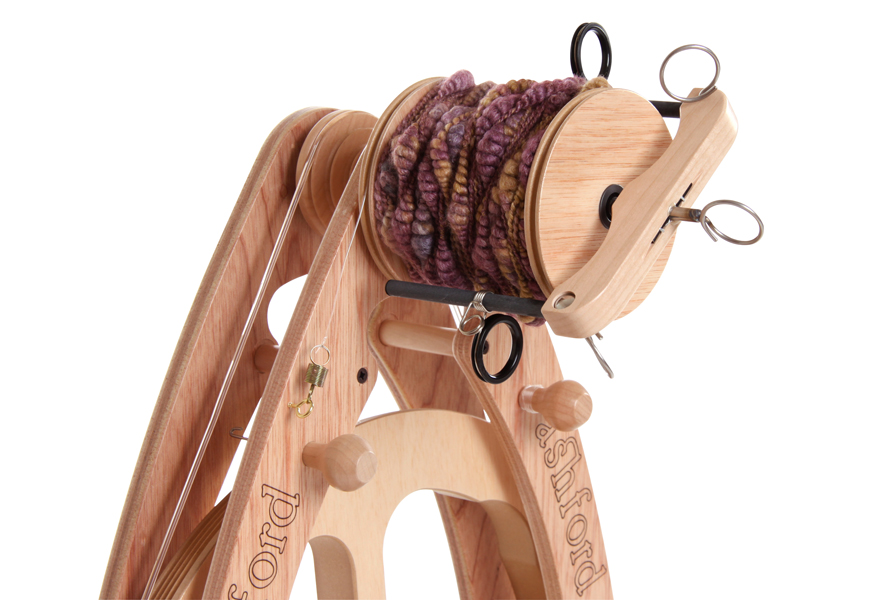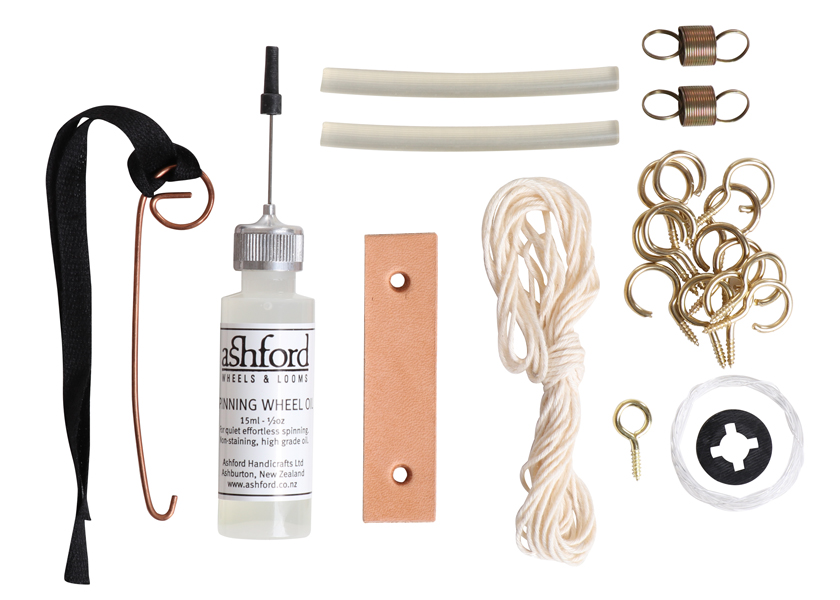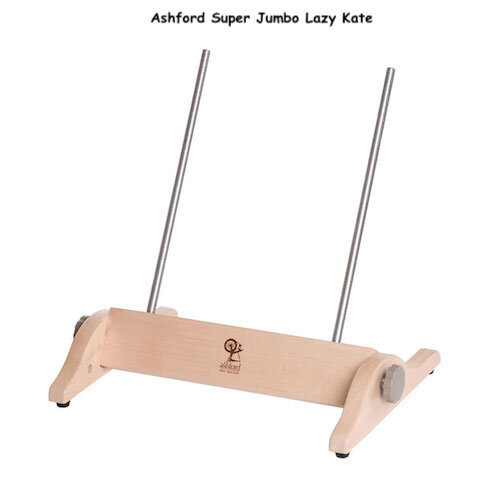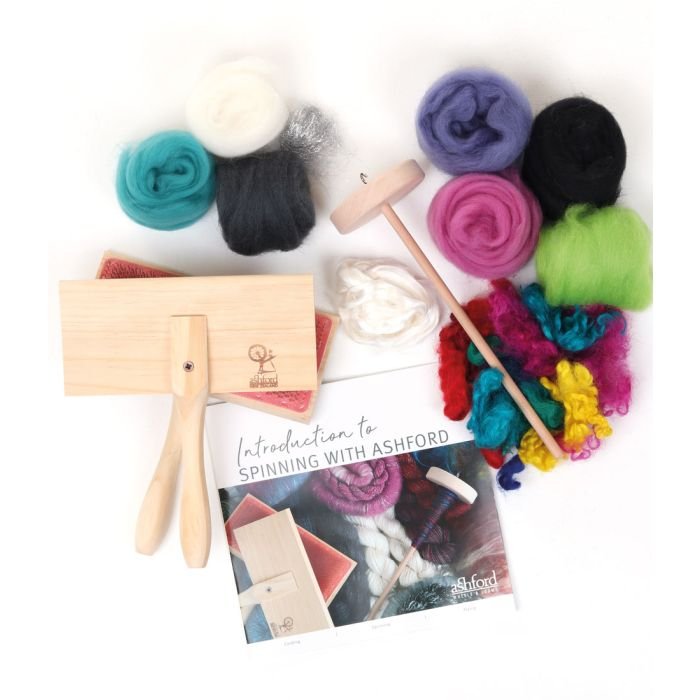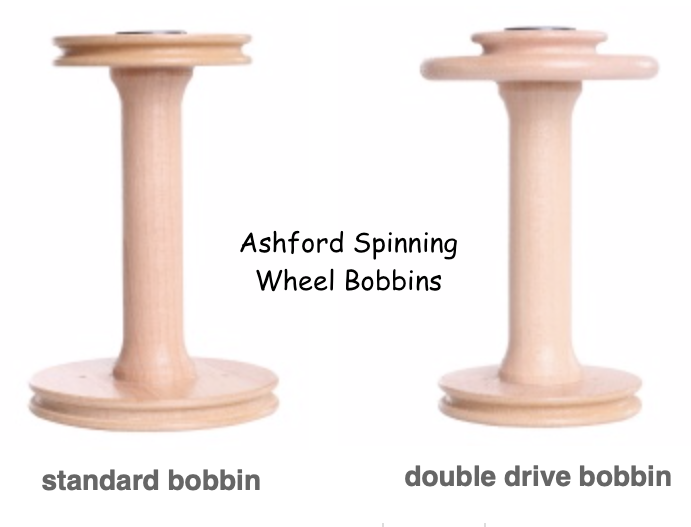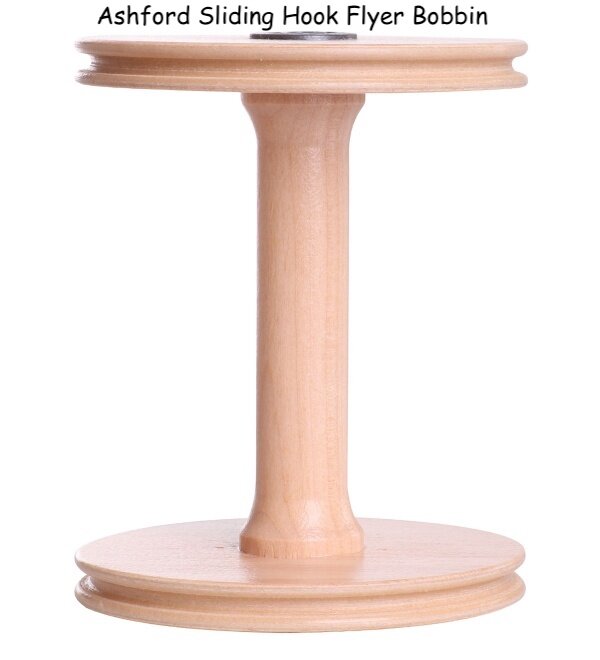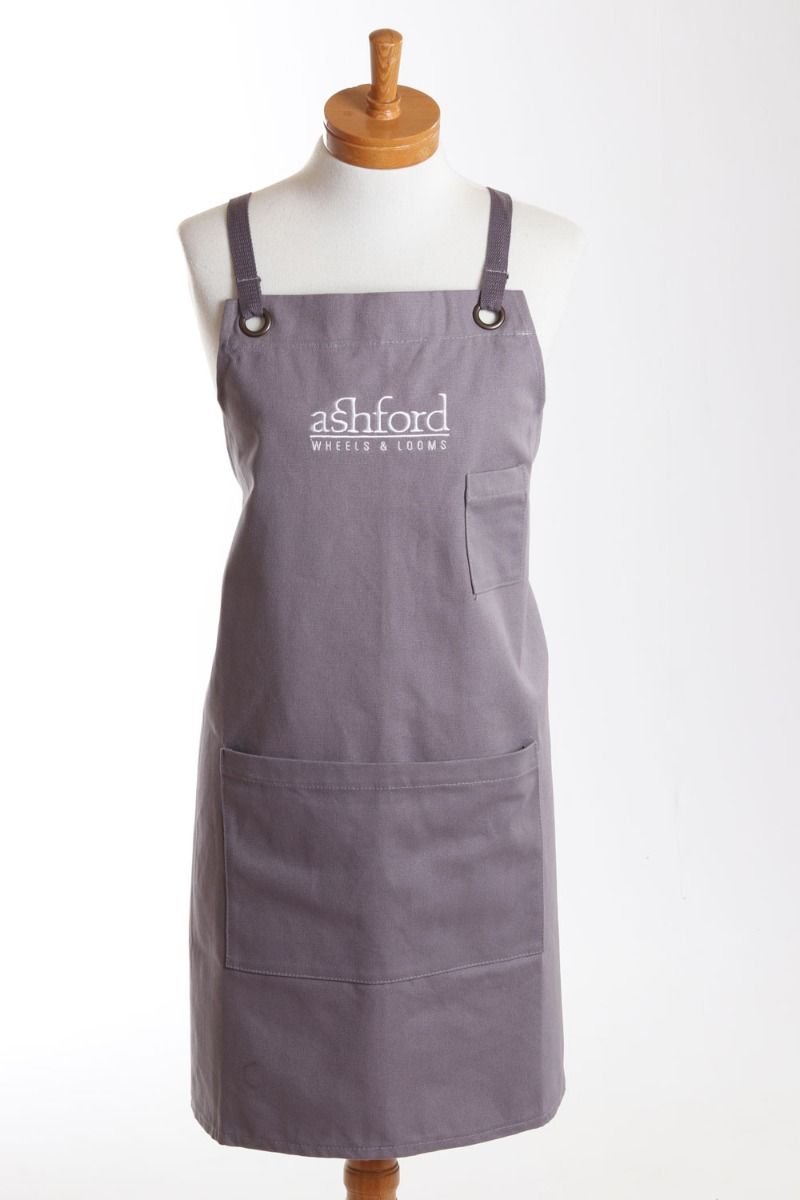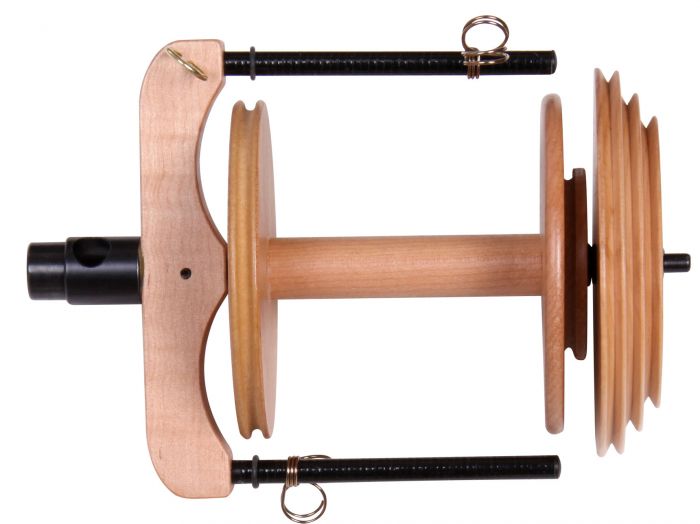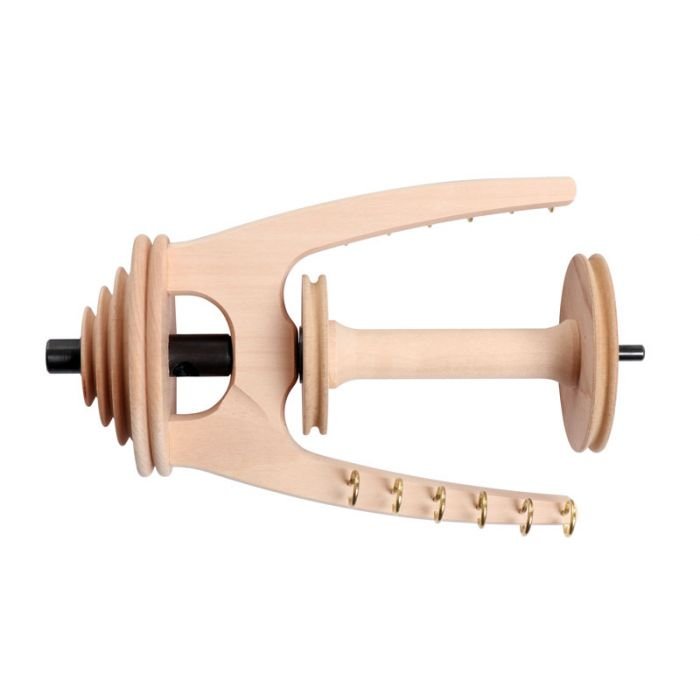Selecting, Preparing and Spinning Mohair
OBTAINING AND EVALUATING MOHAIR
Sources. Most spinning and weaving shops and mail-order sources carry some kind of commercially prepared mohair. The terms sliver, top, and roving are often used rather loosely, so you need to examine the preparation to determine whether it meets your needs. True rovings generally have a small diameter because they have been drawn out to a diameter related to the thickness of the yarn to be mill spun. Commercially prepared kid mohair sliver or top is rarely available to handspinners because of commercial demand for it. The top available in the United States is generally adult mohair, suitable for rugs, but not for soft garments and accessories. The mohair top I sell is a young adult Top, softest I have found. Combed Top in kid mohair blended with merino in both undyed white and multi colors that is nice. Commercially processed fibers are a good way to blend with fibers you already have or get ideas to blend your own. White sliver or top is probably purebred mohair; you may also find gray, amber, or reddish mohair with varying amounts of kemp in it, this is probably cross-bred mohair. Natural colored mohair is getting easier to find, as the breeding program in recent years has improved dramatically. Raw mohair fleece is also sometimes available in spinning shops. A number of people advertise mohair in spinning and weaving magazines. Send for samples, let the farmer know what you are looking for and send them a few bucks for their trouble. Compare the fibers, and decide which are best for your purpose. Consulting with the supplier by phone or mail may help you make your decision. Fleeces that have been raised from other handspinners are generally the best sources. Try to obtain fleeces that have been shown and were judged. These will? have very little vegetation, and be of the best quality. Expect to pay more for these fleeces, time and effort should be compensated to the breeder. Covered fleeces are also worth the extra money. Picking vegetation out of mohair can be very time consuming.
CONDITION How do you decide whether a fleece is worth your time and money. Any mohair fleece in good condition that is not too short or too tangled can be put to some use by handspinners. The question is, will it be right for your projects? First, pass up very matted and tangled fleeces. A fleece that is in good condition, with sufficient body oils, should not be excessively matted unless it has been allowed to grow longer than six months. A fleece that has sufficient oils will have definite locks with some character and will be much easier to process than a dry fleece. Dry fleeces usually have no definite locks; the mohair tends to be tangled and matted and feels harsh, and fibers are likely to break during either commercial or home processing. A dry fleece lacks bright luster of a desirable fleece. A lot of burrs or other extraneous material mean more work for you; if the fleece is otherwise wonderful, it might be worth the effort. Don't reject an otherwise great fleece just because it is a buck fleece. Raw buck fleeces may be smelly and stink when wet, but after thorough washing they smell the same as any other clean mohair. In my experience I have only had a problem with goats that were not purebred Angora. Dairy, Pygmy, Natural colored bucks and their crosses can be pretty smelly. The white Angora breed has been improved over centuries and I suspect one of the things that was breed out of them was the smell.
GRADES. Baby "super kid" mohair is the finest, softest, and most luxurious kind. And also the hardest to find. Only a few baby goats will exhibit this "super kid" quality. If you find it, get it,? the extra cost is well worth it. It is perfect for articles which come in contact with the skin, silky pullovers, scarves, baby clothes but will be wasted in a rug unless you just want the luxury, don't require durability and expense is no object. Kid is wonderful blended with fine wool like merino, silk, angora rabbit....fibers to extend the fine qualities of the kid mohair. Adult mohair is coarse, hard-wearing, and less expensive, so would be most appropriate for a rug, or super duty socks. If you use adult mohair to make a garment to be worn next to the skin, you will discover the meaning of the term "hair shirt."
Kid mohair can be used wherever you would use "super kid"; it is often feels just as soft but not quite as fine. Yearling and young adult goat mohair fall in between kid and adult, they still may be soft, but is a bit coarser and somewhat pricklier than kid.??? The handle of the fiber's softness or harshness is an important characteristic, which can only in part be judged by its grade. You may see different grades on a single fleece. Generally, the first and second shear on kids would be graded as kid mohair. Though in breeding practices animals will be selected that can keep the finer fleeces the longest. I sometime got a third shearing that I would still consider "kid" grade.
LENGTH. The length of the fiber is another important factor. The longer the fiber is, the less twist must be inserted into it to make a stable yarn. It's desirable to be able to make a good yarn with a minimum of twist, because excess twist reduces the luster of the finished yarn. The best average length for most spinning projects is 5 or 6 inches. If mohair is shorter than 4 inches, (except kid mohair, which can be a little shorter because it is finer), the yarn spun from it will probably shed excessively unless spun with a lot of twist. For kid mohair, 3 inches is an acceptable length, 4 to 5 inches is excellent. Yearling and young adult goat grades should be at least 4 inches long, but 5 or 6 inches is preferable. Adult mohair should be at least 5 or 6 inches long. This length is measured with the lock stretched out.
COMMERCIAL MOHAIR TOP. Most top is easier to spin if you gently separate it into lengths and shake each one to loosen and fluff it. You may want to draw out by hand before spinning, or re-card it to produce a loftier yarn. If you are planning to spin a fine yarn, split the top or draw it out to an appropriate size before spinning. Try spinning in on the fold for a fuzzier yarn.? The fibers are parallel, which can be spun into a worsted yarn. I find this process results in a hard and harsh yarn, but very good if you are looking to a tough as nails yarn..rugs or sock yarn. Ideas? I like to use rainbow dyed top in fiber blends. It is amazing how a mediocre wool fiber can really be enhanced with some mohair carded in.
MOHAIR ROVING Mohair I have processed is into "Roving". It is very easy to spin into a lofty yarn or semi-worsted yarn. Roving is not the same as Combed Top. The fibers are somewhat parallel, but not as much as a combed top.
FIBER PREPARATION. The following methods of preparing and spinning mohair have worked well for me.
WASHING MOHAIR FLEECE. When you get some grease mohair, don't just dump it into a tub of soapy water. If you are planning to have the mohair mechanically picked or carded this next step is not necessary. If you are trying some fancier type of spinning, like yarn with the curls or other hand processed methods, try the following: a little preparation will save a lot of work and time later. Separate the fleece into individual locks or small groups of locks; open up any thick locks to allow water to penetrate. Separating is usually best done by pulling the tip of a lock away from its neighbors with one hand while holding the adjoining locks with the other. Try to keep locks intact. Most loose dirt, vegetable matter, and second cuts will fall out during this step. Work over a box or paper to catch the litter, a metal grate is nice. It is usually easier to separate the locks before washing than afterward. However, teasing mohair fibers apart before washing not only is a waste of effort but eliminates some of the choices in later stages of preparation. After separating the locks, put them into mesh bags for washing, to keep them as intact as possible. Fill the bags loosely, don't pack them. If you are doing small amounts in a sink you can omit the mesh bags. I use this process when I am washing locks for the doll wig & beard market or using the locks for adding to felting projects, etc.? Just try to carefully handle the locks.
WASHING, SCOURING OR DYEING. These three variables must be considered when washing any fiber: time, temperature, and pH (additives, such as washing soda and baking soda, alter the pH). Mohair can be more readily damaged in wet processing than wool, so a set of routine cautions is in order.
SCOURING MOHAIR. Hot water is necessary to remove the grease in most mohair. However, prolonged periods above 140° F will damage the fibers. Begin with water about 145° , it will cool. Always use enough water to float the mohair, between 1.5 and 2 gallons per pound of mohair, but put the water (and any additives) in the sink or basin before adding the mohair.
An additive may be necessary to remove the grease thoroughly unless your water supply is very alkaline. Some add Washing Soda, I prefer adding baking soda (sodium bicarbonate) because it is a weaker alkali, not as reactive or caustic as washing soda (sodium carbonate). However, it's necessary to use about four times as much baking soda to bring the pH up to the desired level, and it may take longer to work. Alternatively, you may prefer to use less washing soda and more detergent than I suggest.
The amount of soda needed depends upon the amount of grease in the fleece and the pH of your water. Check with your water utility or test the water yourself to find out what the unaltered pH of your water is. For mohair with an average amount of grease, my goal is a pH between 8 and 9 before the detergent is added. For very greasy adult mohair, I use enough soda to produce a pH of 9 to 10. Kid mohair and dry fleeces need no soda and should not be subjected to it.
Protein fibers are damaged by long soaking in highly alkaline solutions. It's important to use only enough additive to do the job, and to limit the amount of time the fiber spends in the solution. I mix the soda into the hot water, then add detergent. Soda does not replace detergent as a washing agent; rather, it combines with the grease to form a soap, so that the grease can be removed.
As a detergent, try the washing agent that works best for you in your laundry when you have to wash really dirty clothes. Hardness can be counteracted by the use of Calgon or an other water softener, according to the instructions on the box. If you have a soft water supply, you may want to decrease or not need the addition of soda.
Use a liquid laundry detergent. If you use a powdered detergent, dissolve it completely before adding the mohair. You'll find that any washing agent that works on fine, greasy wools will probably work on mohair, though you may need more of it for mohair. Always “test” different detergents as there may be chemicals added that will harm or destroy your fiber.
Gently giving the mohair an occasional stir during each soak is helpful, but too much agitation can break up the locks, making later preparation more time consuming. Spin the water out in a washing machine (spin-only cycle) or centrifugal spinner after each of the following steps.
1. Optional step: soak in soft water at 135-145° F for 15 minutes to an hour to soften the grease and remove much of the dust.
2. FIRST WASH & RINSE. In hot water about 145° F (set your water heater to the highest possible), THIS IS REALLY HOT, SO USE THICK RUBBER GLOVES AND REMEMBER TO REDUCE TEMP. FOR HOUSEHOLD USE! Adjust the PH of your water if necessary, dissolve enough soda to attain the desired pH: about 1 teaspoon washing soda or 2 to 3 teaspoons of baking soda to every two gallons of pH-neutral (pH 7.0) water. For each pound of mohair, add about half the amount of laundry detergent you would normally use in a full washer load of really dirty clothes. Add the mohair and soak for 15 minutes to an hour, checking progress now and then. The water will appear milky. To check, remove a lock and rinse it in hot water. If the lock feels gummy, the grease is not out. After you have washed a batch or so you will be able to tell when it is ready without having to rinse a lock. Large quantities of mohair usually require more time than small quantities. Keep the temperature of the water above 125° F to avoid formation of a scum that may be redeposited on the mohair. Lift out the bags or spin out the water. Remove the mohair and fill the tub with hot water. Add the mohair, let it sit about 15-30 minutes, stir around. Spin out the water. Remove the mohair before refilling the tub.
3. SECOND WASH. Add a quarter to half the amount of detergent used in the previous step; use soda only if the mohair feels gummy after the first washing. Soak for 15 to 30 minutes. The second wash further loosens the dirt and other residue. Locks should not feel gummy after this step. If you are in doubt, you can check by rinsing a lock in plain warm water. If the lock still feels gummy, repeat step 3, being sure the water temperature is above 125° F.
4. RINSE at least two times, using plenty of progressively cooler water each time, soaking 15 to 30 minutes in each change of water. The temperature for the final rinse can be about 115° F. Check the pH of the last rinse to see whether vinegar is needed. A pH of 6 is perfect. Since some tests do not measure pH with absolute precision, you can add a very small amount of vinegar (about 1 cup when washing between 6 and 8 pounds of mohair) just to be on the safe side. I believe it is better to err very slightly on the acid side of neutral than on the alkaline side, since alkalis damage protein fiber.
5. Remove the mohair from the tub or mesh bags and spread out to dry, as with wool.
DYEING MOHAIR. Because high temperatures damage mohair, techniques have been devised to dye it at lower temperatures. Fortunately, mohair takes up dye faster and at lower temperatures than does wool. Minimize damage and get good results by using the same dyes and procedures as for wool but keeping the temperatures at or below 145° to 180° F.
Acid dyes, such as Washfast, One Shot, Gaywool or Lanaset / Sabreset dyes are especially good for mohair because optimum results can be obtained by holding the fiber at 150° F for between 30 and 40 minutes. Procion Dyes, which are generally for plant fibers, such as cotton, work with mohair, but the intensity won't be has bright as with the Lanaset (protein fiber dyes). Any type of dye that works on wool will work on Mohair. I do find that mohair dyed with the wool will take on a deeper, brighter color than the wool, which I find adds interest to fiber blends. Mohair must be clean in order to take the dye evenly. Dyeing lightly stained or natural color mohair locks can produce interesting color variations.
CARDING AND COMBING MOHAIR. As is true with any fiber, the way you prepare mohair for spinning will determine to a large degree the yarn you obtain. Unevenly combed or carded fiber will produce bumpy yarn. When preparing a lot of mohair, do not pile the finished batts too high, because they will pack down more readily than wool. And be careful where you put them; pets love to curl up in a basket of mohair.
The relative humidity where you live will be a major factor in determining how much static electricity you have to cope with. Though less of a problem for handspinners than for mills, static electricity occurs when the relative humidity is low and the moisture content of the mohair is less than 10 to 15 percent. If you have difficulty with static electricity, apply some type of oil before carding, many basic spinning books tell how. Some people recommend olive oil or other vegetable oils. Mineral oil will not become rancid if left in the fibers for extended periods, but may become gummy. Static electricity is not a big problem for me, but I have had good results, with this mixture. Use a couple of T of liquid fabric softener to a spray bottle of water. You can mist your fibers and when it has dried, it will be ready to spin or store.
If spinning oil does not control the problem, you may also have to rest the mohair between stages of preparation in order to spin a smooth, controlled yarn. Blending mohair with small amount of wool can also help subdue static electricity. If you want a fuzzy, slubby yarn, a little static electricity can be an aid.
Carding mohair is a good way to prepare fibers which are not more than 5 or 6 inches long and makes a fluffier yarn than combing does. Tease mohair just as you do wool. Many people like to use a picker. Teasing is not always necessary before hand carding, if the locks can be opened up and spread out on the cards. Thorough teasing or picking is necessary for good results with a drum carder.
CARDING MOHAIR WITH HAND CARDS. The trick in hand carding is not to let the ends that hang off the front of the cards become tangled. A little extra wrist action and a wider horizontal separation of the cards between strokes help. Avoid putting too much fiber on hand cards--it fluffs up and makes carding ineffective and time consuming. Doff the batt carefully. If you are carding fine, short mohair, you can make a rolag. Otherwise, doff the batt flat and spin from a corner or an end. Alternatively, you can roll the batt up parallel to the direction of the fibers, then draw it out evenly by hand and twist it slightly to form a roving.
CARDING MOHAIR ON A DRUM CARDER. If the mohair has been well picked and is not fed onto the drum too quickly, you may find that one pass is enough. However, more than one pass is generally necessary for a really good preparation. If you are doing color blends (Carded Top works great), I like to do just one pass, to keep the colors from not mixing too much and looking muted. The medium carding cloth, is excellent for the first carding of most mohair. It can also be used for blending mohair with other fibers, but is not suitable for 100% baby kid and other very fine, delicate specialty fibers, which are best carded entirely on the fur or Fine drum or spun from picked locks.
Fibers which are to be blended together should be carded separately first. The fine drum, with the finer carding cloth, is best for blending mohair of all grades with other fibers.
After producing batts on the drum carder, you have several options. You may split each batt into strips and spin from the strips directly. To make an excellent semi-worsted yarn, lay several of these strips side by side and draw them into a uniform, slightly twisted roving. Loosely wind the roving sections up like snails and place them in boxes or baskets until you are ready to spin. For a fuzzier yarn, you may tear the batts crosswise into smaller batts about the size of those made on hand cards, then spin from one corner to the end. If the fibers are relatively short, you may first make these small batts into rolags.
COMBING MOHAIR. This is the best way to prepare long to medium-length fibers, which are difficult to card, and is the method to use to produce a smooth worsted yarn. You can always use the classic wool combs or paddle combs to comb mohair; paddle combs work well with mohair locks that have a lot of shorter hair at their cut ends. However, there are ways of obtaining a satisfactory semi-worsted preparation without specialized equipment. See drum carding above. You may also comb locks individually with a metal comb, a dog rake, or a fiicker. Whichever of these alternative tools you choose, start by placing a protective piece of heavy leather or other tough material over your knee. Lay a lock on your knee, grasping it firmly by one end. With the comb, rake, or flicker, begin combing the tip of the lock, working back toward your holding hand, as you would do when untangling long hair. Then reverse the lock and comb out the other end. Don't skip the middle section! I find that tangled locks are easier to comb if I hold each lock under tension and rap on it sharply several times with the teeth of the tool before beginning to brush. Combing also minimizes breakage and noils (but save the noils you do get and card them with short wool to make into rolags). Spin the prepared locks directly from their tips, or lay several locks side by side and draw them out by hand into a fine strip.
SPINNING. Spinning mohair is similar to spinning wool and other hairlike fibers, but the mohair fibers draw much more freely than wool. The yarn may slip away from you until you are accustomed to handling it. To me, the luster and fuzziness (hairiness) of mohair are its most distinctive and lovely characteristics, and I like to highlight these qualities. Luster is enhanced by low twist in both worsted and woolen yarns. Low twist allows light to bounce off more fiber surfaces, producing a rich halo glowing effect. In a high-twist, compact yarn, light can reflect off the surface of the yarn only, producing a duller effect. To enhance the luster, I insert only the amount of twist necessary to make a stable yarn suitable for my purpose.
If a yarn will be subjected to very hard wear, then durability must be put ahead of enhanced luster and more twist must be inserted. Worsted yarn is strong and hard wearing; lofty semi-worsted and woolen-spun yarns are light in weight and ideal for articles that will not be subject to hard wear. Many fancy (novelty) yarns can be spun of mohair. There several excellent books and videos with different approaches to designing fancy yarns.
Mohair yarn is a hair fiber, so memory is not one of its strong points. Even commercially blended mohair tends to grow in a knitted garment. Its weight and lack of fiber memory is the problem here. Adding fine wools to your mohair blend will help without sacrificing the benefits of mohair. Do not hang knitted garments. Store clean folded on a shelve. Remember those pesky moths, they love dirty protein fibers.? It is OK to lightly brush your garment. Use a natural bristle brush, the kind you would use on your own head. Mohair doesn't wrinkle easily so is great for traveling.
Researched and written by Elizabeth Barkas
